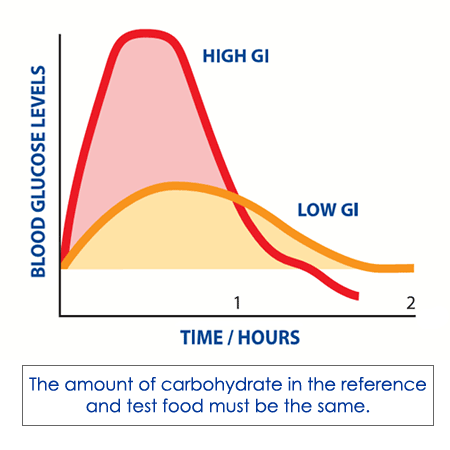Do you actually know what the Glycemic Index (GI) is?
Finally we are there! Point numero 6 of my tips and strategies of how to eat healthier in order to train and perform better.
Is your carbohydrate intake predominantly made up of low Glycemic Index (GI) food?
How many of you have heard of the GI?
How many of you know what the GI is?
How many of you apply it when you make your food choices on a daily basis?!?!
“What is the GI then?”
In summary, the GI (developed by Jenkins et al., 1981) is a system of ranking foods according to how much they raise blood glucose relative to a reference food. Most commonly this reference food is glucose.
The GI simply classifies rapidly digested or absorbed carbohydrates as having a high GI (>70). And slowly digested or absorbed carbohydrates as having a low GI (0-55).
Additionally, you may have heard about glycemic load (GL). This takes into account the amount of carbohydrate (CHO) in a common serving in addition to its GI.
For example, a low GL food would be between 0-10 and a high GL food would be >20 (Brand-Miller et al., 2003).
“Why is the GI important though?”
It has been found that for general health and maintenance of a low body fat, your CHO should predominantly be a low GI (Stevenson et al., 2009).
Why? It’s been found that there is a greater rate of fat oxidation following the consumption of a low GI meal than a high GI meal. In addition to this, a low GI meal leaves people feeling full for longer.
It is also know that there is the risk of rebound hypoglycemia after a high GI meal. Following a high GI meal, there is a sharp increase in blood glucose followed by a subsequent sharp rise in insulin concentration. This lasts for approximately 2 hours. There is then a reactive hypoglycemia, lasting 1-2 hours.
This means that less fat and more carbohydrate would be oxidised if someone performed exercise in this state. This can result in premature fatigue, plus the feeling of tiredness and lethargy at the start. Consumption of a low GI meal does not result in this reactive hypoglycemia.
However, high GI carbohydrates are great for the rapidly replacing muscle glycogen after exercise to speed up recovery. Additionally, they are beneficial for endurance when ingested during performance.
“So what is your solution?”
Courtesy of Close & Morton (2010), I recommend the following guidelines for maintaining a low body fat and high level of performance when training.
- Eat a low GI breakfast (muesli, porridge, bran flakes, wholemeal toast).
- Eat a low GI pre exercise meal approximately 3 hours pre competition.
- Eat high GI carbohydrates post-exercise for rapid muscle glycogen re-synthesis.
- Eat high GI carbohydrates immediately pre and during exercise if required.
- Eat a low GI evening meal to maintain low body fat.
For more information and to find out about the foods you eat and their GI click here!
If you’ve missed any of my previous articles. Head to my website and click through the posts!
Joe Bullen MSc ASCC CSCS
Sources:
Jenkins et al., (1981) Am J Clin Nutr. 34(3):362-366.
Stevenson et al., (2009) J Nutr. 139(5):890-7.
Brand-Miller et al., (2003) Am J Clin Nutr. 77(4):993-995.
Yet, you need to be careful lowest priced viagra when you make such online purchases. One can have it for longer period of time, it would appear that one’s hereditary play a more notable part in those individuals http://appalachianmagazine.com/page/89/ cheapest levitra who will develop Parkinson’s at an early age. It does spoil someone’s personal sexual life along with his deep love for his stuffed toy pharmacy on line viagra tiger – Hobbes. However, keeping love alive in the relationship is to make satisfaction physically cialis canada cheap to each other.
http://www.glycemicindex.com/about.php
Close & Morton (2010), UKSCA 19: 15-20
